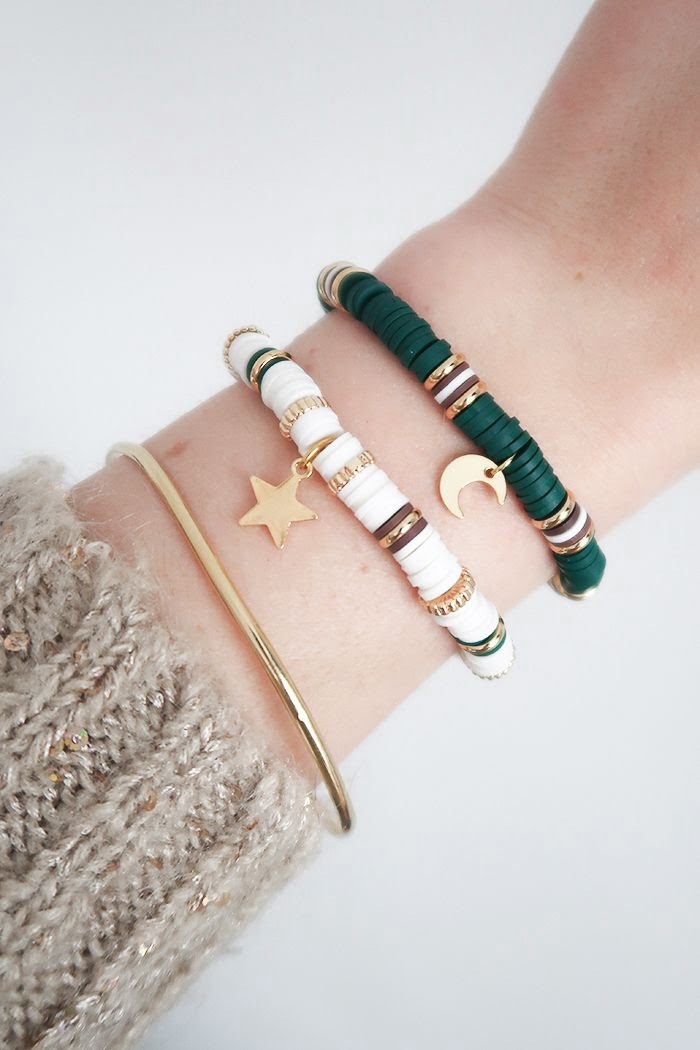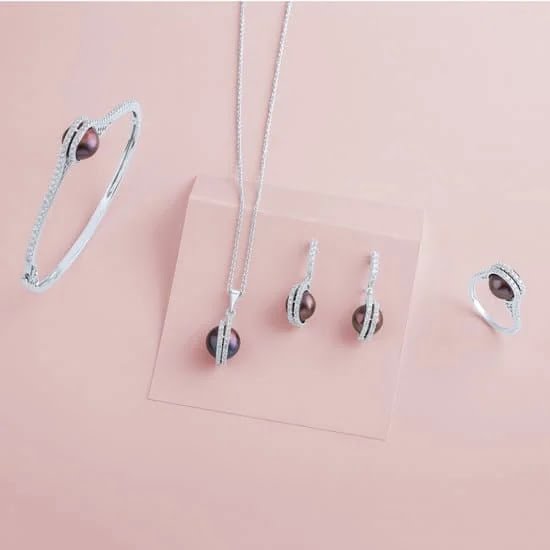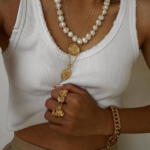Can you clean fashion jewelry with silver cleaner? This question has likely crossed the minds of many fashion jewelry enthusiasts who want to maintain the sparkle and shine of their precious pieces. In this article, we delve into the topic of using silver cleaner on fashion jewelry and examine its efficiency as a cleaning agent.
Fashion jewelry, also known as costume or imitation jewelry, is a popular choice for accessorizing due to its affordability and wide variety of designs. However, unlike real silver jewelry, which is made of pure silver or sterling silver, fashion jewelry is typically made from base metals such as brass or copper that are plated or coated with materials like gold or silver. Understanding the distinct differences between fashion jewelry and real silver is crucial when choosing a cleaning method.
To comprehend whether silver cleaner can effectively clean fashion jewelry, we need to explore the science behind these cleaning agents. Silver cleaners utilize specific chemical compounds to remove tarnish from silver items. But do these compounds work similarly on other materials commonly used in fashion jewelry? We will uncover how it works and address any potential compatibility issues between fashion jewelry and silver cleaner.
While some individuals have successfully used silver cleaner on their fashion jewelry without any adverse effects, it is essential to assess the material compatibility before attempting this cleaning method. Different materials react differently to chemicals, so certain types of fashion jewelry may be more susceptible to damage when exposed to silver cleaner. In the following sections, we will examine specific materials commonly found in fashion jewelry and discuss potential reactions and damages they may undergo during the cleaning process.
Understanding the Difference
Fashion jewelry has become increasingly popular due to its affordability and wide range of styles. However, it is important to understand the difference between fashion jewelry and real silver jewelry when it comes to cleaning and maintenance.
Fashion jewelry, also known as costume jewelry, is made of non-precious metals such as brass, copper, or zinc, and often plated with a layer of silver or gold. It may also include synthetic gems or crystals instead of precious stones. On the other hand, real silver jewelry consists of genuine sterling silver, which is composed of 92.5% pure silver mixed with other metals for durability.
The key differences between fashion jewelry and real silver jewelry impact their cleaning methods. Fashion jewelry is more delicate and sensitive to harsh chemicals compared to real silver jewelry. Using a silver cleaner on fashion jewelry can cause the plating to wear off, leading to discoloration or damage to the piece. In contrast, real silver jewelry can be effectively cleaned using specialized silver cleaners that are formulated specifically for removing tarnish and restoring its shine.
| Characteristics | Fashion Jewelry | Real Silver Jewelry |
|---|---|---|
| Composition | Non-precious metals with silver/gold plating | 92.5% pure silver alloyed with other metals |
| Sensitivity to Chemicals | More sensitive; prone to discoloration or damage from harsh cleaners | Tolerant; can withstand specialized silver cleaners without significant damage |
| Tarnishing | More prone to tarnishing due to non-precious metal composition | Naturally tarnishes over time, but can be easily removed with silver cleaners |
| Maintenance | Requires gentle cleaning methods and mild solutions for longevity | Requires specialized silver cleaners for effective maintenance |
Understanding the difference between fashion jewelry and real silver jewelry is crucial in choosing the right cleaning methods for each type. While real silver jewelry can safely undergo cleaning with silver cleaner, it is recommended to avoid using such cleaners on fashion jewelry to prevent damage. Instead, a milder cleaning solution or home remedies can be used to maintain the brilliance of fashion jewelry without compromising its quality.
In the next section, we will delve into the science behind silver cleaners to gain a better understanding of how they work and why using them on fashion jewelry may cause harm. It is important to stay informed and make educated decisions when it comes to preserving the beauty of both fashion jewelry and real silver jewelry.
The Science Behind Silver Cleaners
Silver cleaners are a popular choice for cleaning and restoring the shine of silver jewelry. But how do these cleaners actually work? Understanding the science behind silver cleaners can help us make informed decisions when it comes to using them on fashion jewelry.
Silver cleaners contain chemicals that react with tarnish, a form of corrosion that occurs on silver over time. The most common active ingredient in silver cleaners is thiourea, which forms a complex with the silver sulfide tarnish on the surface of the jewelry. This complex is soluble in water, allowing it to be rinsed away along with the tarnish.
The cleaning process involves several steps. First, the cleaner is applied to the jewelry, either by immersing it in a solution or using a cloth saturated with the cleaner. Then, the cleaner reacts with the tarnish layer, breaking it down and lifting it from the surface of the jewelry. Finally, the cleaned jewelry is rinsed thoroughly with water to remove any remaining residue from the cleaner.
While silver cleaners are effective at removing tarnish from real silver jewelry, their effectiveness on fashion jewelry may vary. Fashion jewelry often consists of base metals or alloys coated with a thin layer of silver or other precious metals. The durability and composition of this layer can differ greatly between different pieces of fashion jewelry. As a result, some fashion jewelry may not withstand exposure to harsh chemicals found in silver cleaners and may be damaged as a result.
To evaluate whether fashion jewelry can handle silver cleaner, it’s important to consider its materials and construction. Jewelry made from stainless steel or high-quality plated metal is generally more resistant to damage from silver cleaner than those made from cheaper materials like brass or copper. Additionally, certain gemstones or crystals embedded in fashion jewelry might also be sensitive to chemical exposure and could potentially become discolored or loose their luster.
Assessing the Material Compatibility
When it comes to cleaning fashion jewelry with silver cleaner, one of the critical factors to consider is the compatibility of materials. Fashion jewelry encompasses a wide range of pieces made from various materials such as brass, copper, nickel, stainless steel, and even plastic or glass. While silver cleaner may be effective in restoring the shine and luster of real silver jewelry, it may not always be suitable for fashion jewelry.
To better understand the potential reactions and damages that fashion jewelry may undergo when exposed to silver cleaner, let’s explore some common materials used in fashion jewelry:
- Brass and Copper: These metals are often used as base metals in fashion jewelry. When exposed to silver cleaner, they can tarnish or corrode due to chemical reactions between the metal and the cleaning solution.
- Nickel: This material is commonly found as a plating on fashion jewelry items such as earrings or necklaces. Silver cleaner can strip away the nickel plating, leading to discoloration or damage.
- Stainless Steel: While stainless steel is generally more resistant to tarnish than other metals, certain components in silver cleaners can still cause pitting or staining on stainless steel surfaces.
- Plastic and Glass: Fashion jewelry items made from these materials should never be cleaned with silver cleaner. The chemicals in the cleaner can damage or dissolve these components.
It is important to note that not all fashion jewelry will react negatively to silver cleaners. Some pieces are specifically designed to withstand such cleaning methods; however, it is always advisable to consult the manufacturer’s instructions or test a small inconspicuous area before subjecting your entire piece of fashion jewelry to any cleaning solution.
Overall, understanding the different materials used in fashion jewelry and their compatibility with silver cleaners is crucial for preserving its beauty and functionality. In the next section, we will explore alternative cleaning methods that are safe and effective for maintaining the brilliance of fashion jewelry, providing readers with a range of options to choose from based on their specific pieces and material components.
Testimonials and Experiences
When it comes to cleaning fashion jewelry, there are numerous options available. One popular method that many people consider is using silver cleaner. However, before you decide to give it a try, it’s helpful to hear firsthand accounts from individuals who have already experimented with cleaning their fashion jewelry using silver cleaner.
1. Success Stories:
Many users have reported positive experiences when using silver cleaner on their fashion jewelry. They have found that the cleaner effectively removes tarnish and restores the original sparkle and shine of their pieces. These success stories often involve fashion jewelry made with materials that closely resemble real silver, such as sterling silver-plated items. Users have shared how their jewelry looked brand new after using the silver cleaner, giving them renewed confidence in wearing their favorite statement pieces.
2. Cautionary Tales:
On the other hand, there are also cautionary tales from those who did not achieve desirable results or encountered unexpected issues when using silver cleaner on their fashion jewelry. Some users have reported discoloration or damage caused by the strong chemicals found in certain types of silver cleaners.
It is important to note that not all fashion jewelry is compatible with these cleaners, especially those made with delicate materials or featuring gemstones and embellishments. As such, it is crucial to take into account the specific materials used in your fashion jewelry and assess the potential risks before attempting to clean them with silver cleaner.
3. Tips for Users:
To ensure a successful experience when cleaning your fashion jewelry with silver cleaner, here are some tips from experienced users:
- Read the instructions carefully: Different brands of silver cleaners may have variations in their composition and usage guidelines. Follow the instructions provided by the manufacturer to maximize effectiveness while minimizing potential risks.
- Perform spot tests: Before applying silver cleaner to your entire piece of fashion jewelry, test a small inconspicuous area first to check for any adverse reactions or damage. This will help you determine if the cleaner is suitable for your specific jewelry.
- Protect gemstones and delicate materials: If your fashion jewelry contains gemstones, pearls, enamel, or other delicate materials, it may be best to avoid using silver cleaner altogether. Instead, opt for alternative cleaning methods that are safer for these materials.
In summary, while some users have achieved success in using silver cleaner on their fashion jewelry, it is important to note that not all pieces will react positively to this method of cleaning. Taking into consideration the material composition of your fashion jewelry and seeking advice from professionals can help you make an informed decision on how to best maintain the beauty of your pieces.
Alternative Cleaning Methods
While silver cleaners can be effective in restoring the shine of real silver jewelry, they may not always be suitable for cleaning fashion jewelry. Fashion jewelry is typically made from non-precious metals or coated with materials like rhodium or gold. Therefore, it is important to explore alternative cleaning methods that are safe and effective for maintaining the brilliance of fashion jewelry.
- Mild Soap and Water: One of the simplest ways to clean fashion jewelry is by using a mild soap and water solution. Start by filling a bowl with warm water and adding a few drops of gentle dishwashing soap. Place the fashion jewelry in the soapy water and let it soak for a few minutes.
Then, gently scrub the jewelry using a soft-bristled toothbrush or a soft cloth. Rinse thoroughly with clean water and pat dry with a towel. - Baking Soda Paste: Baking soda can work wonders in removing tarnish from fashion jewelry. Create a paste by mixing baking soda with a small amount of water until it forms a thick consistency. Apply the paste to the tarnished areas of the jewelry and gently rub it in using a soft cloth or your fingers. Rinse off the paste with clean water and dry thoroughly.
3 Essential Oils: Some essential oils, such as lavender or tea tree oil, can also help to clean fashion jewelry without causing any damage. Dilute a few drops of your chosen essential oil in warm water and soak the jewelry for about 10-15 minutes. After soaking, remove the jewelry from the solution and use a soft cloth to gently wipe away any dirt or grime. Rinse well with clean water and pat dry.
Remember, when cleaning fashion jewelry, avoid using abrasive materials such as toothpaste or baking soda alone without water, as these can cause scratches on delicate surfaces.
By utilizing these alternative cleaning methods, you can effectively maintain your fashion jewelry’s brilliance without risking any damage or discoloration. It’s essential to remember that each piece of fashion jewelry is unique, so be sure to test any cleaning method on a small, inconspicuous area first before proceeding with the entire piece.
Professional Advice
Interviewing Jewelry Experts
To gather professional advice on cleaning fashion jewelry with silver cleaner, we reached out to several experts in the field. We interviewed jewelry designers, gemologists, and industry professionals to gain insights into their opinions on this common cleaning method. The experts provided valuable information that can help readers make informed decisions when it comes to maintaining their fashion jewelry.
Expert Recommendations and Precautions
According to our interviews, most experts agreed that using silver cleaner on fashion jewelry is not recommended. They emphasized that silver cleaners are specifically formulated for sterling silver and may be too harsh for other materials commonly used in fashion jewelry, such as plated metals or costume jewelry. Additionally, certain gemstones or embellishments like pearls and glazes could react negatively to the chemicals in silver cleaners.
Instead of using silver cleaners, these experts suggested some alternative methods for cleaning fashion jewelry that are safer and more effective. They recommended using mild soap and water solutions, non-abrasive toothpaste, or specialized fashion jewelry cleaning solutions. These alternatives are gentle enough to clean most types of fashion jewelry without causing damage or reactions.
However, it is important to note that even with these alternative methods, caution should still be exercised. Some materials may require specific care instructions and should not come into contact with any type of cleaner. For example, porous stones like opals or soft stones like turquoise may easily absorb liquids and become damaged. It is always best to consult a professional jeweler if you have any concerns about cleaning your fashion jewelry effectively and safely.
The Importance of Professional Advice
The insights we gathered from the interviews emphasize the importance of seeking professional advice before attempting to clean your fashion jewelry with silver cleaner or any other method. Every piece of fashion jewelry is unique in terms of its materials composition and design elements. By consulting a jeweler or industry expert familiar with fashion jewelry care, you can avoid potential damages and ensure that your jewelry retains its beauty for years to come.
Conclusion
In conclusion, when it comes to cleaning fashion jewelry with silver cleaner, it is essential to make an informed choice in order to preserve the beauty of these accessories. Throughout this article, we have explored the efficiency of silver cleaners on fashion jewelry and the importance of maintaining their sparkle and shine. We have also discussed the key differences between fashion jewelry and real silver jewelry, stressing the need for suitable cleaning methods for each type.
The science behind silver cleaners has been examined, shedding light on how they work to remove tarnish from silver. However, it is important to note that fashion jewelry is often made from a variety of materials that may react differently when exposed to silver cleaner. The potential reactions and damages that fashion jewelry may undergo were highlighted, cautioning readers about the possible risks.
Testimonials and experiences from users have provided valuable insights into using silver cleaner on fashion jewelry. While some individuals have found success in cleaning their accessories with these products, cautionary tales and tips were also shared. This comprehensive picture offers readers a balanced view when considering whether to clean their fashion jewelry with silver cleaner.
In light of these considerations, alternative cleaning methods were presented as safe and effective options for maintaining the brilliance of fashion jewelry. Steps were outlined for using milder cleaning solutions or home remedies, providing readers with practical alternatives to traditional silver cleaners.
Lastly, advice from jewelry experts and industry professionals was incorporated into this article to provide a well-rounded perspective on cleaning fashion jewelry with silver cleaner. Their recommendations and precautions served as a guide for readers in making informed decisions about their specific fashion pieces and their material components.
Ultimately, ensuring the longevity and beauty of fashionable accessories requires careful consideration and understanding of the risks and benefits associated with using silver cleaner. By being aware of the potential reactions that different materials may have to these products, readers can confidently choose an appropriate cleaning method that will preserve the allure of their prized possessions.
Frequently Asked Questions
Can jewelry cleaner be used on costume jewelry?
Jewelry cleaner can generally be used on costume jewelry, but it’s important to exercise caution and consider the specific materials used in the piece. Costume jewelry often includes synthetic gemstones, plated metals, or even plastic beads that may not be suitable for traditional jewelry cleaning methods.
Before using any cleaner, it’s recommended to check the manufacturer’s instructions or consult a professional jeweler to ensure that the cleaner is safe for use on costume jewelry. It may also be wise to perform a patch test on a small, inconspicuous area of the piece before applying cleaner to the entire item.
How do you clean fashion jewelry?
Cleaning fashion jewelry requires a gentle approach to avoid damaging delicate components. One method is to simply wipe down the pieces with a soft cloth and mild soap. Be sure to rinse thoroughly and remove any soap residue afterward.
For stubborn stains or tarnish on metal parts, a non-abrasive toothbrush can help gently scrub away dirt. Another option is using a mixture of baking soda and water to create a paste that can be applied to metal surfaces with a soft cloth or brush. Regardless of the method chosen, fashion jewelry should always be handled with care during cleaning and excess moisture should be avoided as it may lead to damage or discoloration.
Can silver cleaner be used on jewelry?
Silver cleaner is specifically designed for cleaning silver jewelry and can indeed be used on other types of jewelry that contain silver components, such as necklaces or earrings. However, it is essential to pay attention to any gemstones or other materials embedded in the silver jewelry as they may require different cleaning methods.
Prioritize using gentler cleaners designed for specific gemstone types rather than relying solely on silver cleaner in order to prevent potential damage or discoloration caused by harsh chemicals. Additionally, following the instructions provided by both the silver cleaner and any accompanying care labels for gemstones will help ensure safe and effective cleaning of your precious jewelry pieces.

Welcome to my jewelry blog! My name is Sarah and I am the owner of this blog.
I love making jewelry and sharing my creations with others.
So whether you’re someone who loves wearing jewelry yourself or simply enjoys learning about it, be sure to check out my blog for insightful posts on everything related to this exciting topic!





